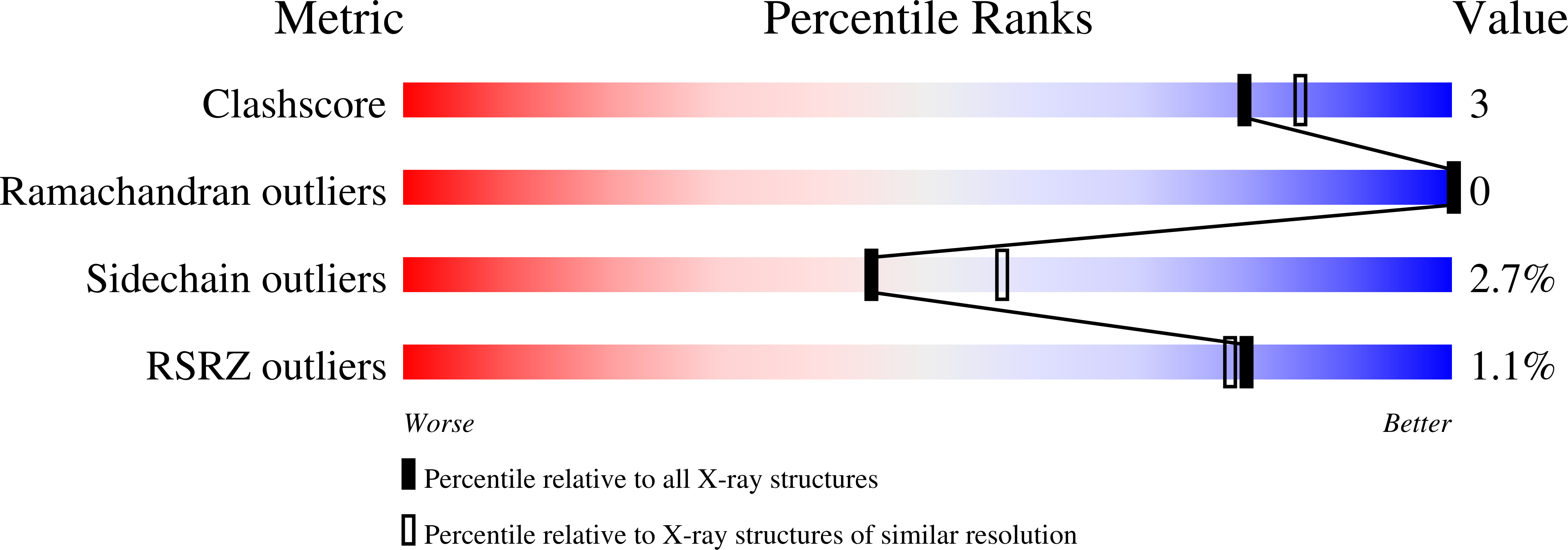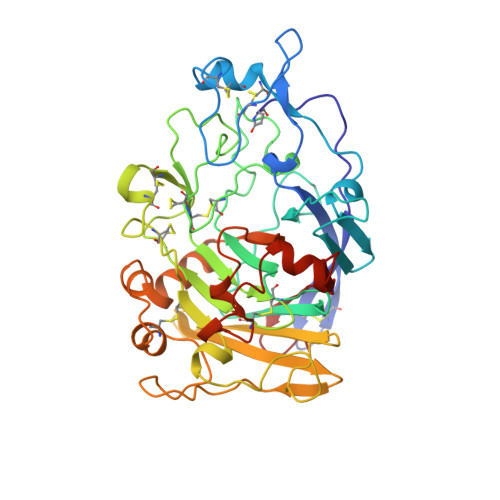Crystal structure of the family 7 endoglucanase I (Cel7B) from Humicola insolens at 2.2 A resolution and identification of the catalytic nucleophile by trapping of the covalent glycosyl-enzyme intermediate.
MacKenzie, L.F., Sulzenbacher, G., Divne, C., Jones, T.A., Woldike, H.F., Schulein, M., Withers, S.G., Davies, G.J.(1998) Biochem J 335: 409-416
- PubMed: 9761741
- DOI: https://doi.org/10.1042/bj3350409
- Primary Citation of Related Structures:
1DYM, 2A39 - PubMed Abstract:
Cellulose is the major polysaccharide component of the plant cell wall and the most abundant naturally produced macromolecule on Earth. The enzymic degradation of cellulose, by cellulases, is therefore of great environmental and commercial significance. Cellulases are found in 12 of the glycoside hydrolase families classified according to their amino acid sequence similarities. Endoglucanase I (Cel7B), from the soft-rot fungus Humicola insolens, is a family 7 enzyme. The structure of the native form of Cel7B from H. insolens at 2.2 A resolution has been solved by molecular replacement using the known Trichoderma reesei cellobiohydrolase I [Divne, Ståhlberg, Reinikainen, Ruohonen, Pettersson, Knowles, Teeri and Jones (1994) Science 265, 524-528] structure as the search model. Cel7B catalyses hydrolysis of the beta-1,4 glycosidic linkages in cellulose with net retention of anomeric configuration. The catalytic nucleophile at the active site of Cel7B has been identified as Glu-197 by trapping of a 2-deoxy-2-fluorocellotriosyl enzyme intermediate and identification of the labelled peptide in peptic digests by tandem MS. Site-directed mutagenesis of both Glu-197 and the prospective catalytic acid, Glu-202, results in inactive enzyme, confirming the critical role of these groups for catalysis.
Organizational Affiliation:
Department of Chemistry, University of British Columbia, Vancouver, V6T 1Z1, Canada.
















